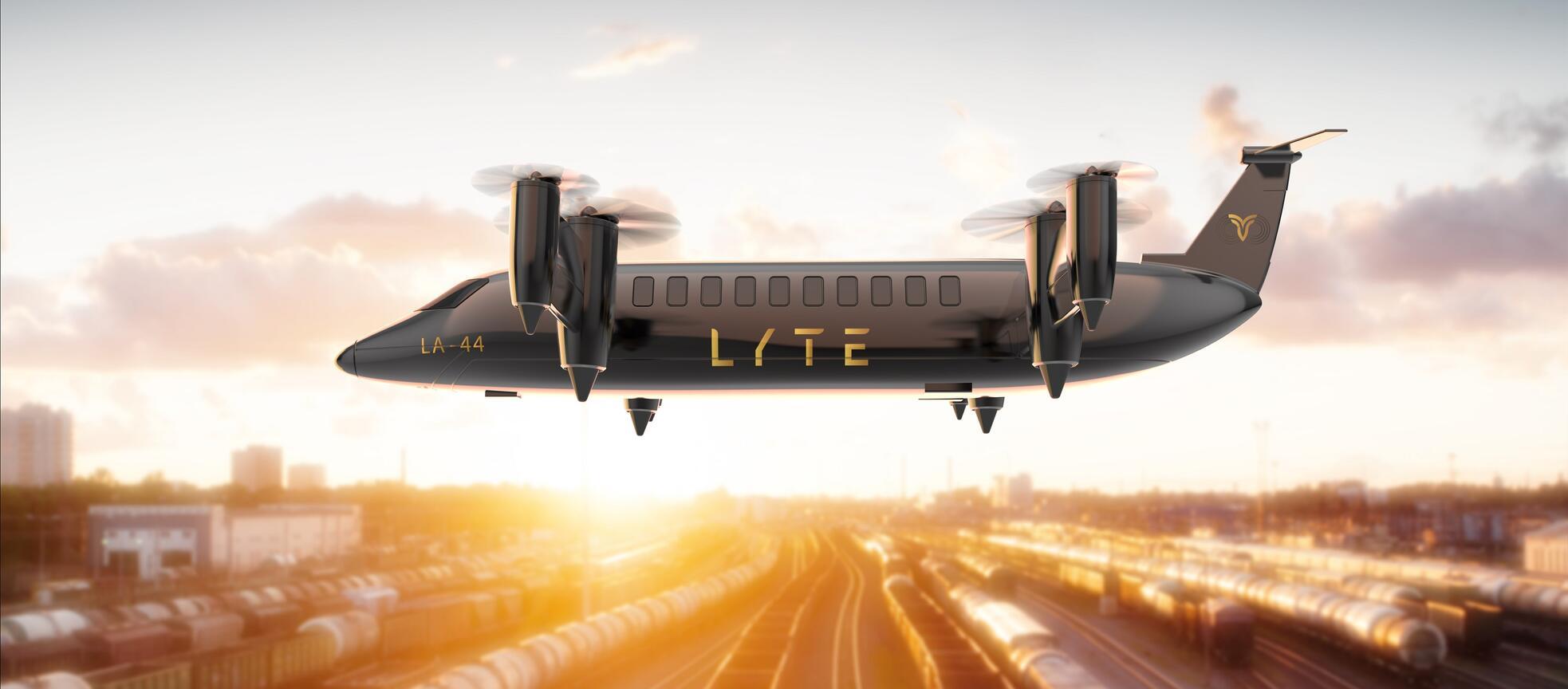
The hybrid-electric SkyBus and SkyTruck are intended to carry 40 passengers and 4.5 tons, respectively.
Most startups competing in the crowded space for electric- vertical-takeoff-and-landing (eVTOL) vehicles are targeting small aircraft capable of carrying a handful of passengers or a modest-sized cargo load on short hops, with plans to eventually scale up to larger platforms once technologies and regulations mature.
The “start-small” approach has been so commonplace that eVTOLs have become nearly synonymous with smaller aircraft. But what if a startup chose to cut out the intermediary steps and start instead with a larger platform? That is the bet that Lyte Aviation, a London-based startup that recently emerged from stealth mode, is making, with plans to develop a 40-seat family of cargo and passenger hybrid eVTOLs, dubbed the LA-44 SkyTruck and SkyBus, respectively.
“When I first saw the four-seater air taxis a few years ago, I thought to myself, ‘How is it that we don’t have a bigger one? What if I pushed the boundaries and started with a 40-seater?’” says Freshta Farzam, founder and CEO of Lyte Aviation. “I think if I came up with this project 10 years ago, it wouldn’t have worked. But today, the smaller aircraft have helped open up this market, so we’re not really starting from scratch. The proof of concept is out there already and it’s working.”
The SkyBus and SkyTruck are hybrid eVTOLs built with a tandem tiltwing design capable of carrying two pilots and 40 passengers, or 4.5 tons of cargo, up to 1,000 km (625 mi.) at a top speed of 300 km/hr. The aircraft will be powered by a hybrid solution combining four conventional turbine engines with a hydrogen fuel cell that will power four electric motors located at the wingtips.
The cargo-focused SkyTruck is expected to make its debut before the passenger-variant SkyBus, which Farzam says will allow time for public acceptance and regulations to mature. Asked about the market demand for a medium-payload, hybrid-cargo eVTOL, Farzam says she envisions the aircraft being used to transport sensitive goods and materials to remote sites and locations that lack suitable rail or road access.
“We can cover coastlines or traverse forests that are very hard to reach for trucks on the ground,” Farzam says. “And because we are point-to-point and don’t need a runway, we can operate to many sites where they don’t have airports and infrastructure. I think there are a lot of opportunities where you can actually deliver goods in three hours by SkyTruck instead of nine hours by a regular truck.”
On the passenger side, Farzam says she envisions the SkyBus as a mass-transit vehicle that would compete with existing ground transportation like cars, buses and trains. The focus of the services would be short hops between cities, like from Orange County to Los Angeles, that can take well more than an hour by car but could be shaved down to 15 or 20 min. by flying, she says.
Next steps will include building initial subscale demonstrators to prove out the technology before advancing to a full-scale prototype, which Farzam expects to roll out within two years. Commercial market entry is planned for 2030.
The company has so far received strategic backing from Inmarsat and Inflight Canada.
Asked whether her plan to build a 40-seat eVTOL may be too ambitious, Farzam says it is “ambitious but feasible.
“When you look at companies like Lilium and Joby, they were very ambitious, too, for entering a market that didn’t even know what an air taxi was,” she says. “They have already disrupted the mindsets of the general public and the investor community—and now I’m simply expanding on that vision.”






Comments
But the tilt wing suffers from a substantial sickening drop during transitions, which will be a very major negative for the bus version. Neither the wing nor the rotors are able to maintain altitude when halfway through the transition.
Tilt rotors solve this problem by allowing the wing to stay functional during transition. The electric motors on the wing tips could easily pivot while the wing remains horizontal. And Bell has demonstrated a practical tilt rotor gearbox that combines tilting with gear reduction for the turbine engines. The US Army has selected it as their best path forward for assault aircraft.